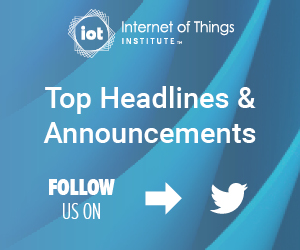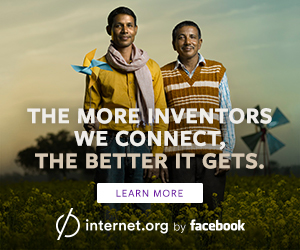The best IoT technology for small businesses
The Internet of Things (IoT), to which innovative devices are constantly connected, provides companies with valuable information and processes that allow them to save money.
It may seem that IoT technology is complicated and expensive, only within the budget of large corporations, but there are many, many devices that will allow you to run your business more efficiently and profitably.
Access and security
Smart locks
Intelligent locks mean greater convenience for small businesses, allowing them to manage building access and security from any device.
Sometimes employees lose their keys, which is not only a nuisance, but also a major security risk. However, thanks to smart locks, both you and your employees can control the locks from your phone or other device.
Using unique access codes, small business owners can manage and control who enters a building, which is especially effective when combined with small cameras and alarms.
Connected cameras
Security cameras have been around for decades and are becoming cheaper and more powerful, especially when combined with smart locks.
Today, connected cameras allow a business owner to remotely monitor offices, warehouses, entrances and other areas.
Unlike when expensive and bulky servers or other storage devices are used, images can be recorded, often without limitations, in the cloud.
The connected cameras use the Wi-Fi network, so no cables are required and they can be placed anywhere, provided they have power.
However, this same capability means they must have a good wireless Internet connection.
The ease of installation is one of the reasons why it is so affordable to implement this technology today.
Mobile card readers
Mobile Point-of-Sale devices (mPOS) have revolutionized commerce. Increasingly frequent card payments have reduced the use of cash, which is more convenient and reduces accounting errors. In addition, as there is less cash in stores, the risk of theft is reduced.
Although experts say that cards are safer than cash, mPOS devices and systems are still vulnerable to hackers and fraud.
The advice for merchants is to keep systems up to date, check that the latest protections are in place (firewall, two-factor authentication, endpoint protection) and practice good password management.
Inventory and stock control
Software and connected machines to manage deliveries without human intervention. In fact, many small businesses already use bar codes, radio frequency identification (RFID) tags and IoT devices for inventory control.
IoT and RFID technologies can be combined to create “smart warehouses” equipped with sensors and cameras to manage inventory remotely and centrally (including automated replenishment).
In the near future, small businesses will start using IoT robot carts to fully automate and control deliveries from a central application or system.
Shipment tracking devices
The IoT provides full visibility of deliveries, especially for long distance shipments. Connected tracking devices provide essential information, down to the detail of the package’s location, to supply chain transportation management platforms.
By having more accurate information about what happens at each stage of a journey, companies can work with their internal and external partners to improve efficiency and gain a competitive advantage.
Supply chain data monitoring
As in the previous point, the IoT provides more detailed information on the supply chain, for example on the status of stocks (in particular perishable products), allowing companies to check the quality of shipments.
This data can be used to provide companies with information on specific shipments, to make data-based risk assessments or to improve specific aspects of processes.

Connected devices included in shipments can also be used to collect other data, such as emissions (to keep them within legal limits), and allow logistics companies to proactively manage cargo.
The devices can also monitor security, reducing crime, loss and damage.
Temperature and climate monitoring
Temperature and climate monitoring technology already brings benefits to farmers and growers.
Weather can drive a company to ruin. Real-time data and predictive modeling can help farmers better manage their crops and protect them from, for example, excessive rainfall or high temperatures.
IoT solutions have already helped these companies reduce costs, achieve higher yields and prevent over- or under-irrigation. They also help them make better informed decisions about pesticides and disease prevention.
Fields and crops can now be equipped with connected devices that record rainfall, wind, air pressure and humidity, data that can be analyzed by software for recommendations.
The IoT can also monitor storage facilities to control temperature, ensure the supervision of perishable products, report any problems if necessary and comply with current legislation.
Voice assistants
Voice assistants have improved with the development of artificial intelligence, machine learning and natural language processing (NLP) software. Basic assistants can take notes, set reminders and send alerts.
In more advanced products or services, speech recognition software works alongside applications to perform certain tasks.
This list of features keeps growing, ranging from voice delivery of search results to flight booking and remote security control.
In addition to the productivity benefits for individuals, companies are using voice assistants to provide better customer service and increase revenues by reducing the costs associated with a sale.
Many companies integrate or optimize their products and services for voice assistants like Siri and Alexa. This way they improve their products or services, or they are able to reach new audiences. The highly praised chatbots increase the efficiency of the companies and provide them with valuable data.
Smart lights
Connected lights and lighting systems offer several benefits. For companies, they serve to reduce costs and increase safety.
Modern intelligent lighting products can help companies to monitor various facilities and their environment, increase staff safety (including road safety in warehouses and car parks) and even offer location-based services such as intelligent parking.
Smart lights can be controlled from mobile phones and other devices to help achieve sustainability goals and provide a measurable return on investment.
Intelligent thermostats and air conditioning
Thermostats could almost be considered the primitive predecessors of intelligent devices, as they manage heating according to a predefined temperature. However, the IoT will expand the ability of companies to remotely manage the environment in large facilities.
Heating, ventilation and air conditioning (HVAC) can be centrally monitored and controlled remotely to increase comfort and maximize energy efficiency.
As technology develops, some devices can even be self-learning to further increase efficiency and cost savings.
Cybersecurity risks for the IoT
There is no need to explain to anyone that the facility must be locked and protected. Most likely your building will have motion detector alarms, perhaps with security guards to protect it from intruders.
In addition, your company should have cyber security that prevents online intruders from stealing, spreading, hacking, infecting, or hijacking your software and data.
As more and more connected devices and IoT technologies emerge, from wearable devices to alarm systems and access managers, it is important for small businesses to maintain security.
There is no doubt that the Internet of Things will revolutionize our daily lives, but new networked devices can provide criminals with new entry points to company systems, which can create new vulnerabilities and threats.
These threats only increase the need for small businesses to invest in high-quality endpoint security.










